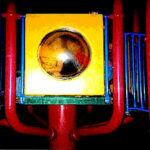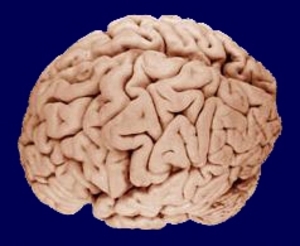Discipline comes from the Latin term “disciplinar” which means “to teach”. Discipline involves many factors that are designed to teach and emphasize socially acceptable behavior. Effective discipline will teach by the use of punishment and reward system to properly ensure a healthy attitude and behavior. In the course of this discipline, children will attain self-control, self-direction and a sense of compassion (Banks 2002).
Child behavior problems are complex and involve many factors. Children commonly misbehave when they are hungry, sleepy, bored or void of adult attention. Gaining negative attention or scolding from a parent may inadvertently reinforce the negative behavior (Banks 2002).
Children from families effected by divorce, separation, poverty, drug use, or a variety of mental illnesses, including depression, may be at a higher risk for developing behavioral problems. Biological issues, such as ADHD, may predispose children to higher incidence of misbehavior leading to corporal punishment (Banks 2002).
Corporal punishment is a popular form of discipline that has been used by people for centuries. Corporal punishment refers to an action taken by parents with the intention of causing the child pain without injury, with the objective of correcting or controlling the inappropriate behavior (Murray, Kantor, Kaufman 1994). People who defend corporal punishment imply that no-corporal punishment equals no-discipline or permissive parenting (Straus 2001)
In many countries, physical discipline is considered acceptable, if not necessary,
for the socialization of their children. In the United States, corporal punishment or spanking is frequently used for punishments of preschool-aged children. Nine out of ten preschool aged children have been spanked, and most of them have been spanked no less than one time in the past week (Slade, 2006).
A growing number of nations are viewing the act as an violation of the rights of children and a threat factor in their development. In these countries, legal representatives favors the protection of the child’s rights and physical integrity. In ten nations, the use of physical retribution by all caregivers has been outlawed (Durrant, Rose-Krasnor, Broberg 2003).
Mounting research supports the premise that corporal punishment is an unsuccessful discipline approach with children. Furthermore, corporal punishment is dangerous and often generates anger, antipathy, and low self-esteem. Corporal punishment teaches children that violence and vengeance are solutions to problems. Children recognize and imitate what they see adults doing, this perpetuates the problem. (Paintal, 2007).
One study explored signs of mental distress in a sizeable sample of normal young people who reported receiving physical punishment from their parents. Adolescents who alleged that their parents often used physical punishment reported elevated levels of mental distress and psychiatric symptoms and decreased levels of well-being . These results point to the close link between physical punishment and mental distress in adolescents and to the magnitude of the collective factors (Bachar, Canetti, Bonne, DeNour, Shalev, 1997).
Another study found that parental verbal abuse and corporal punishment was the most powerful predictor of behavioral problems. Also noted, was that when parents display fewer nurturing behaviors and have reduced developmental expectations, their children will likely have increased behavior problems. Children will be more apt to pursue negative attention when parents show little or no attention to their children (Brenner, Fox 1999).
Both of these studies point out the negative effects of corporal punishment. Although these studies focus on different aspects of child development, they both make a strong case for abstaining from the use of corporal punishment.
Childhood discipline is an extremely important issue for many parents. Parents that are frusturated may ask their family doctor for advice on handling behavioral problems. Since discipline techniques directly effect social and mental development of children, physicians should make this discussion a crucial part of physician-parents interactions (Banks, 2002).
Discussion regarding discipline should begin at an early age. Physicians have a duty to remain nonjudgmental and they also have a duty to be be clear about what kinds of discipline are effective and safe. Some physicians may feel more comfortable in referring families to a counselor, support group or parenting programs that might be able to assist them better (Banks, 2002).
Discussion
While reviewing the literature on this topic vast amount of studies that indicate that corporal punishment has long term damaging effects on children were found. Not only can corporal punishment inflict physical pain, but, the emotional pain can also have devastating effects. It is important to note that all children react differently to
punishment and some may show more resillency than others. There are several other factors that were not discussed, such as gender differences, cross-cultural perspectives and generational or biological effects of corporal punishment. However, the evidence that was gathered showed very little support for corporal punishment and mounting evidence towards negative results.
Recommendations to Parents
The first thing that should be recognized by parents is that there are multiple factors that could be contributing to the inappropriate behavior by a child. Children misbehave when their basic needs are not being met. These needs may include but are not limited to, sleep, food, shelter, attention and even lack of proper discipline. As discussed earlier, corporal punishment may unintentionally reinforce the childs bad behavior (Banks 2002).
It is important to do your own research and find out what the professionals are saying about this issue. Often times we learn our behavior from our parents and it may seem like normative behavior to physically discipline a child. We often engage in this kind of discipline without thinking about the long term effects.
If you are confused about whether or not you should use corporal punishment then it is extremely important that you seek the advice of your family physician, a family counselor or other community services that will help you understand the issue.
There are many things that can be done in place of physical punishment. Parents often get frusturated because they seek immediate gratification and spanking a child will immediately handle the problem. Having patients, endurance and implementing life changing models will be most beneficial in and dealing with the problem and ensuring long-term well-being of both parent and child.
The first step is making a conscious effort to change your parental behavior. You need to look at things from a different perspective and be open to selfless change. There are many forms of discipline that are effective, but it requires committment and time, but the results can be astonishing.
Positive reinforcement is critical in discipline. So many parents focus on punishing negative behavior when they should be rewarding positive behavior. Often times the child will take what attention they can get and it is easier to get negative attention. If you take the time to really stop and appreciate the little things and reward good behavior the child will pick up on that association.
Rewards can be anything from a smile or hug to special prizes, activities or extra privileges. Rewarding should be given right away so that the child can connect the reward with the good behavior (Banks, 2002).
Extinction” is a discipline technique that eliminates positive reinforcement for unacceptable conduct. For example, if you show no response to a toddler that is whining then they will understand that their behavioral tactic is not getting them positive reinforcement or attention. Time-outs or restricting privileges are other forms of extinction (Banks, 2002).
Punishment should only be used for teaching and reinforcing positive behavior and not for teaching revenge or vengeance. Children should not be punished for things that happened accidentally and they should not be punished for things that are part of the normal developmental process, such as wetting their pants (Banks, 2002).
In conclusion there is overwhelming evidence that suggests that corporal punishment is ineffective and damaging. We owe it to our children to ensure a healthy balance of discipline and love with positive reinforcement and interaction without corporal punishment.
References
Banks J.B. (2002). Childhood discipline: Challenges for clinicians and parents. American Family Physician, 66(8), 1447-52.
Brenner, V. Fox, R. A. (1998). Parental Discipline and Behavior Problems in Young Children. The Journal of Genetic Psychology, 159(2), 251-256.
Bachar, E. Canetti, L., Bonne, O. DeNour, A. K. Shalev, A.Y (1997). Physical punishment and signs of mental distress in normal adolescents. Adolescence, 32(128), 945-958.
Durrant, J.E. Rose-Krasnor, L. Broberg A.G. (2003). Physical Punishment and Maternal Beliefs in Sweden and Canada*. Journal of Comparative Family Studies, 34(4), 585-XI.
Paintal, S. (2007). Banning Corporal Punishment of Children. Childhood Education, 83(6), 410-413.
Straus, M.A (2001). New evidence for the benefits of never spanking. Society, 38(6), 52-60.
Straus, M.A, Kantor, Glenda Kaufman. (1994). Corporal punishment of adolescents by parents: A risk factor in the epidemiology of depression, suicide, alcohol abuse, child abuse, and wife beating. Adolescence, 29(115), 543.
Slade, E. (2006, January). Spanking in Early Childhood and Later Behavior Problems. Pediatrics for Parents, 22(5), 10-11.






